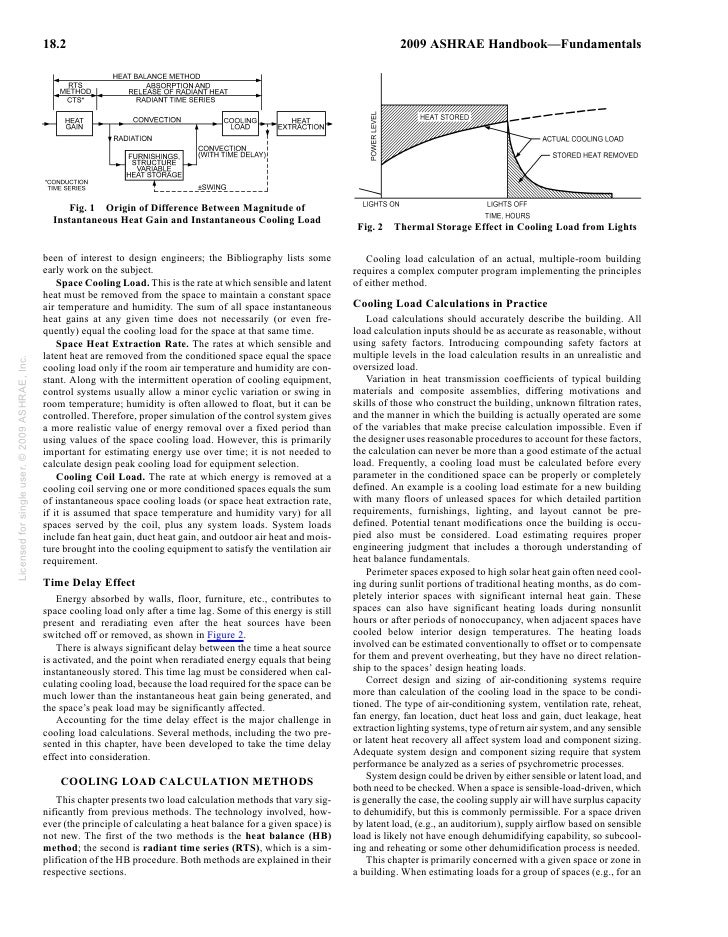- See Full List On Carrier.com
- Cooling Load Calculation Rts Program 1
- Cooling Load Calculation Rts Program 2
- Available Formats
- Options
- Availability
- Priced From ( in USD )
- Self Extracting File Format
- 👥
- Immediate download
- $39.00
Customers Who Bought This Also Bought
Preventing Legionellosis
Priced From $8.003751 (RP-610) -- Ultraviolet Light Irradiation of Potable..
Priced From $15.00CH-06-12-2 - Legionella Prevalence in Cooling Towers: Ass..
Priced From $15.00Elite Software -- Ductsize - HVAC Duct Sizing and Analysi..
Priced From $299.00
About This Item
- . IBACOS – Building America “Guide to Heating and Cooling Load Calculations for High Performance Homes”. Air Conditioning Contractors of America – Manual J Residential Load Calculation Eighth Edition.
- Perform online ACCA Approved load calculations in minutes. Supports block load or room-by-room. 100% cloud based, can be accessed anywhere, anytime, from any device.
- The general procedure for calculating cooling load for each load component (lights, people, walls, roofs, windows, appliances, etc.) with RTS (ASHRAE) is as follows: Calculate 24 h profile of component heat gains for design day (for conduction, first account for conduction time delay by applying conduction time series). Split heat gains into radiant and convective parts. Apply appropriate.
Full Description
Five different software tools / databases to assist you in your work - available for free. ASHRAE: Service Life and Maintenance Cost Database. The purpose of this database is to provide current information on service life and maintenance costs of typical HVAC equipment. Engineers depend on accurate owning and operating data to.
[Note: this version uses SI units only] The 2009 Radiant Time Series (RTS) Method Load Calculation Spreadsheets (in SI units) are intended as an educational tool both for the student and for the experienced engineer wishing to explore the RTS method. They conform to content in the examples found in Chapter 18, Nonresidential Cooling and Heating Load Calculations, of the 2009 ASHRAE Handbook - Fundamentals.
These spreadsheets allow the user to perform RTS cooling load calculations for lights, people, equipment, walls/roofs, and fenestration components. Calculate component loads for design day weather profiles for any month. Weather data for stations in the United States, Canada, and elsewhere around the world from the 2009 - Fundamentals volume are included for ease of user selection.
Calculate cooling and heating loads for individual rooms or block load zones. Use the 12-month cooling calculations to determine the month and time of peak cooling load for each room or block load zone. Room/zone worksheets can be copied and modified within the spreadsheet to analyze as many rooms or zones as desired; the number of rooms/zones is limited only by the available computer memory.
System Requirements: WinZip, Adobe Acrobat, and Microsoft Excel. File size is 43 MB, so we recommend a broadband internet connection when attempting to download. Zip file includes 3 files totaling 102 MB.


Aquabot bravo repair manual. Citation: ASHRAE Software
Browse related products from ASHRAE
- ASHRAE >Software/CDs/DVDs >Software
The ASHRAE Handbook is published in a series of four volumes, one of which is revised each year, ensuring that no volume is older than four years. The Handbook can be purchased at the ASHRAE Bookstore by clicking on this link.

TC 4.1 is responsible for writing and maintaining the following two chapters in the ASHRAE Handbook - Fundamentals Volume
Chapter 17 - Residential Cooling and Heating Load Calculations
This chapter covers cooling and heating load calculation procedures for residential buildings. It covers detailed heat balance methods that serve as the basis for the cooling load calculation, and simplified cooling load procedures suitable for hand calculations. Discussion of straightforward heating load calculations are also included.

See Full List On Carrier.com
Chapter 18 - Nonresidential Cooling and Heating Load Calculations
This chapter covers cooling and heating load calculation procedures for non-residential buildings. The chapter starts by explaining fundamental load calculation principles. Next the common elements of cooling load calculation are described (e.g., internal heat gain, ventilation, infiltration, moisture migration, fenestration heat gain). Finally, two methods of heating and cooling load calculation are discussed: the heat balance (HB) method and the radiant time series (RTS) method. Extensive examples using the ASHRAE HQ buiiilding in Atlanta are used to illustrate application of the principles described in this chapter.
TC 4.1 is working on the revision of these chapters for the 2025 edition of the ASHRAE Handbook - Fundamentals.
Cooling Load Calculation Rts Program 1
Comment on the Handbook: ASHRAE welcomes your comments on the Handbook or a specific Handbook chapter. To submit a comment about any aspect or part of the Handbook series, you can use the Handbook Comment Form.
Cooling Load Calculation Rts Program 2
Review a Handbook Chapter: To provide your feedback about a specific Handbook chapter, you can answer the brief survey questions on the Handbook Chapter Review Form.